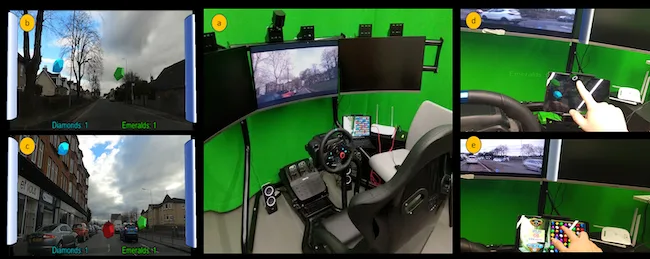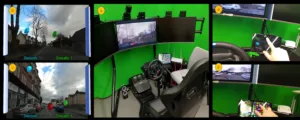As autonomous vehicles inch closer to commonality, the University of Glasgow researchers are investigating augmented reality (AR) as a means to keep drivers engaged, even as they enjoy the perks of self-driving cars. The study focuses on how AR can allow drivers to safely manage entertainment and other non-driving tasks while still being prepared to take control in emergencies.

Led by Thomas Goodge from the School’s Computing Science department, the team’s experiments used a simulated driving setup where participants faced computer monitors simulating a car’s windshield view. The study introduced two tasks: a simple game involving gem collection by gaze and a complex number entry task mimicking dashboard interactions. Each task was designed to measure the impact on situational awareness, especially when faced with potential road hazards.
The researchers discovered that while participants engaged with both the tablet and AR displays, their ability to foresee and react to sudden road changes was compromised compared to a control setup without any tasks. However, adding specific visual cues in the AR display significantly improved their responsiveness, particularly during the less cognitively demanding gem-collecting game.
This study not only highlights the challenges of maintaining driver awareness in autonomous vehicles but also suggests a potential solution through carefully designed AR cues. Professor Frank Pollick, a co-author and a member of the School of Psychology & Neuroscience, noted the importance of addressing the ‘look but fail to see’ phenomenon in driving, where critical visual information is unnoticed due to distractions. AR could be key in mitigating such risks by enhancing the visibility of important road signs and hazards directly within the driver’s line of sight.
Reference
Goodge, T., Pollick, F., & Brewster, S. (2024). Can You Hazard a Guess? Evaluating the Effects of Augmented Reality Cues on Driver Hazard Prediction. ACM CHI Conference on Human Factors in Computing Systems (CHI 2024)

